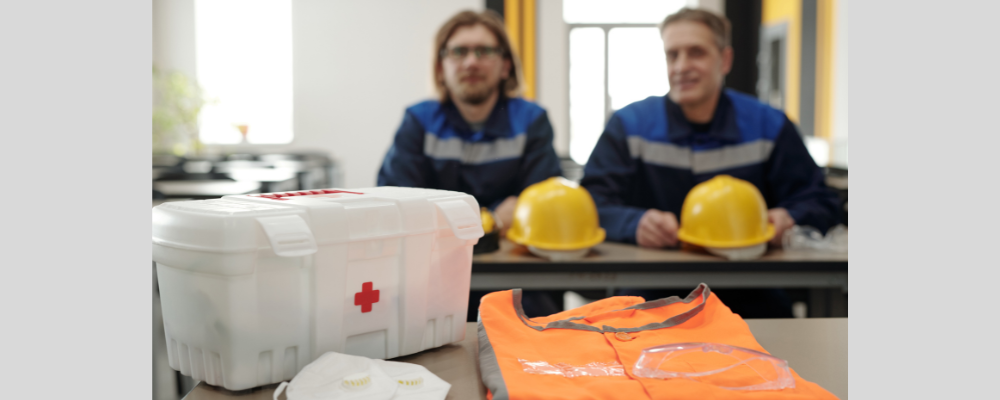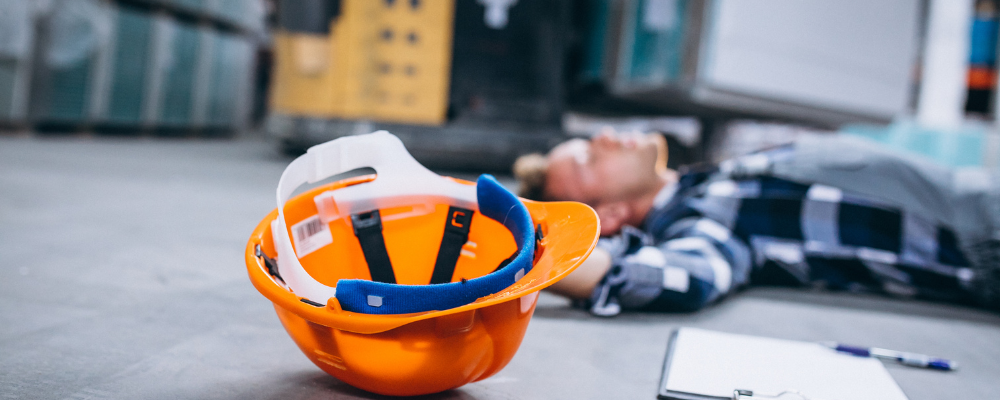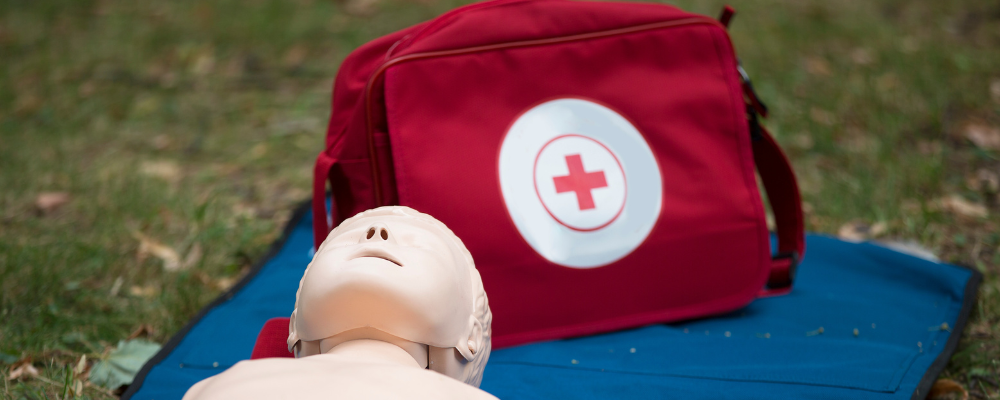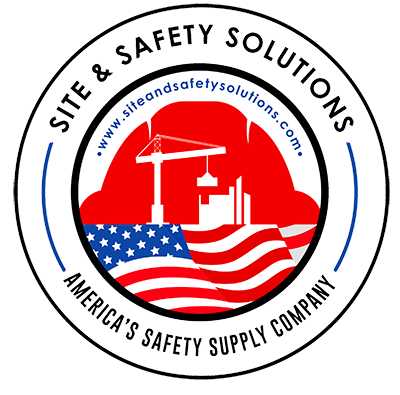
Introduction:
Construction sites are dynamic environments fraught with hazards, making safety an utmost priority. At Site and Safety Solutions, we recognize the multifaceted challenges posed by these workspaces. Our commitment lies in providing unparalleled First Aid solutions meticulously designed to address the distinct needs of construction workers, ensuring swift and effective medical assistance during emergencies.
Understanding the Importance of First Aid in Construction Environments
The Nature of Construction Injuries:
Construction sites are a breeding ground for various injuries, ranging from minor cuts to severe fractures and heat-related ailments. Understanding the spectrum of these injuries is crucial in formulating immediate care protocols. For instance, lacerations demand quick treatment to prevent infections, while fractures necessitate immobilization before professional medical attention.
Regulatory Compliance:
Ensuring compliance with both legal and occupational health standards is imperative in maintaining an optimal level of First Aid provisions. Adherence to Occupational Safety and Health Administration (OSHA) regulations and American National Standards Institute (ANSI) criteria guarantees that First Aid kits are adequately stocked and readily accessible, mitigating risks and enhancing worker safety.
Impact on Productivity and Safety Culture:
The availability of First Aid resources profoundly influences the work environment. Productivity flourishes by fostering a safety culture where employees feel supported and protected. Reduced downtime due to injuries and illnesses not only bolsters productivity but also elevates the morale and commitment of the workforce.
Implementing First Aid Protocols for Common Construction Injuries
Construction sites are inherently prone to various injuries, making understanding and effectively managing these occurrences imperative. Here’s a detailed exploration of typical injuries, first-aid response protocols, and preventive strategies:
Understanding Injury Patterns:
Common Injuries on Construction Sites:
Construction environments often witness a spectrum of injuries:
- Cuts and Abrasions: Resulting from handling tools or materials.
- Fractures and Sprains: Caused by falls, lifting heavy objects, or accidents.
- Heat-Related Issues: Due to prolonged exposure to the sun or working in high-temperature environments.
Understanding the nature of these injuries allows for proactive preparation and targeted first-aid response.
Step-by-Step First Aid Response:
Cuts and Abrasions:
- Immediate Action: Apply pressure to stop bleeding, clean the wound, and cover it with a sterile dressing.
- Seek Medical Assistance: Professional medical attention is necessary if bleeding persists or the cut is deep.
Fractures and Sprains:
- Stabilization: Immobilize the affected area using splints or slings to prevent further injury.
- Elevate and Ice: Elevate the injured limb and apply ice packs to reduce swelling.
Heat-Related Issues:
- Move to Shade: Immediately relocate the affected individual to a cooler area.
- Hydration: Provide water and use cool compresses to lower body temperature.
These step-by-step protocols ensure initial care and stabilization until professional medical help arrives.
Preventive Measures:
Role of Safety Equipment:
- Personal Protective Equipment (PPE): Emphasize using helmets, gloves, goggles, and appropriate footwear.
- Safety Training: Regular training sessions to educate workers on safe practices and hazard awareness.
Site Safety Protocols:
- Site Inspections: Conduct routine checks to identify potential hazards and rectify them promptly.
- Emergency Preparedness: Develop and communicate emergency response plans to all workers.
Preventive measures are crucial in reducing the likelihood of injuries, focusing on proactive safety measures and equipment usage.

Ensuring Ongoing First Aid Preparedness
Training and Education:
Construction sites are dynamic environments where accidents can occur unexpectedly. The effectiveness of First Aid response crucially depends on the preparedness and knowledge of the workers. Regular training sessions are paramount to equip construction personnel with the necessary skills to administer immediate care during emergencies.
Importance of Regular Training:
- Skill Enhancement: Training sessions provide opportunities to enhance skills in assessing injuries, administering CPR, handling fractures, and managing other critical situations.
- Response Efficiency: Well-trained workers react more efficiently during emergencies, potentially mitigating the severity of injuries and promoting faster recovery.
- Team Coordination: Training fosters teamwork and coordination among workers, ensuring a cohesive response in chaotic situations.
Training Content:
- Basic First Aid Procedures: Teaching fundamental procedures like wound care, bandaging techniques, and handling of basic medical equipment.
- Site-Specific Scenarios: Simulating scenarios specific to construction sites, addressing injuries common in this environment, like falls from heights or equipment-related incidents.
- CPR and AED Training: Providing comprehensive training in Cardiopulmonary Resuscitation (CPR) and Automated External Defibrillator (AED) usage.
Maintenance and Restocking:
Maintaining the readiness of First Aid stations is as crucial as the initial setup. Regular checks and restocking ensure these stations are consistently equipped to handle emergencies.
Importance of Consistent Checks:
- Ensuring Availability: Regular checks guarantee that First Aid stations have the necessary supplies, medications, and equipment.
- Compliance with Standards: Adherence to ANSI standards requires periodic inspections and restocking to meet the prescribed requirements.
- Immediate Response Capability: Well-maintained stations ensure immediate availability of supplies, minimizing downtime during emergencies.
Maintenance Protocols:
- Scheduled Inspections: Implement a routine inspection schedule to verify the completeness and expiration of supplies.
- Inventory Management Systems: Utilizing digital systems to track inventory levels and automate restocking processes.
- Restocking Procedures: Establish clear protocols for restocking, ensuring that items are replenished promptly after use or expiration.
Ensuring ongoing preparedness through continuous training and meticulous maintenance and restocking procedures solidifies the safety net provided by First Aid stations, ultimately safeguarding the well-being of construction workers on-site.
Exploring Our First Aid Station Solutions
-
2-Shelf, 75-Person ANSI A+ First Aid Station:
Tailored for smaller construction teams, this station embodies compact yet comprehensive First Aid provisions. Equipped with essentials such as bandages, antiseptics, and basic medical tools, it ensures immediate response capabilities without overwhelming space constraints.
-
4-Shelf, 150-Person ANSI B+ First Aid Station:
Designed for larger construction crews, this station amplifies capacity without compromising on diversity. Its extensive range of supplies caters to a wider array of injuries and emergencies, ensuring thorough coverage for a larger workforce.
-
4-Shelf, 150-Person Industrial First Aid Station:
Crafted specifically for high-risk construction environments, this station is a testament to durability and functionality. Industrial-grade components and specialized equipment address the unique hazards in such settings, offering heightened preparedness for critical situations.
-
200-Person ANSI B+ XXL SmartCompliance® Food Service First Aid Cabinet w/ Medications:
Recognizing the nuanced requirements within food service areas of construction sites, this specialized cabinet integrates First Aid provisions with medications. Its SmartCompliance® system ensures meticulous tracking and restocking, guaranteeing a seamless and reliable supply of essentials in these designated spaces.

Utilizing Technology in First Aid Management for Construction Sites
SmartCompliance® Solutions:
Inventory Tracking: SmartCompliance® systems automate inventory management in First Aid stations, ensuring supplies are consistently available.
Automatic Reordering: These systems detect low stock levels and trigger automatic orders, eliminating manual tracking efforts.
Emergency Alert Systems:
Real-Time Notifications: Implementing systems that instantly alert designated responders or emergency services in case of accidents or injuries.
GPS Integration: Pinpointing the exact location of the incident to facilitate a quicker response time.
Training through Simulations:
Virtual Reality (VR) Training: Creating simulated scenarios to immerse workers in realistic First Aid situations.
Augmented Reality (AR) Modules: Overlaying instructional elements in real-time, enhancing on-site training experiences.
These technological advancements revolutionize First Aid management, improving efficiency, response time, and the quality of training for construction site workers.
Adhering to Regulatory Standards in First Aid Provision for Construction Sites
Construction sites are subject to stringent regulatory standards concerning First Aid provisions to ensure the safety and well-being of workers. Compliance with these regulations is crucial for mitigating risks and maintaining a secure work environment.
OSHA Guidelines:
The Occupational Safety and Health Administration (OSHA) outlines guidelines for First Aid requirements on construction sites. OSHA mandates that employers must provide readily accessible and adequately equipped First Aid stations to address injuries and illnesses promptly.
OSHA’s guidelines dictate the minimum contents of a Lifesaver Essentials kit, including bandages, antiseptics, gloves, and other necessary medical supplies. Additionally, it specifies the need for trained personnel to manage the First Aid stations and respond effectively to emergencies.
Non-compliance with OSHA regulations can result in severe penalties, including fines and potential work stoppages. Moreover, failure to adhere to these guidelines jeopardizes worker safety and undermines the credibility of the construction company.
ANSI Standards:
Complementing OSHA regulations, the American National Standards Institute (ANSI) sets industry standards defining First Aid supplies’ quality and adequacy. ANSI-certified First Aid stations guarantee compliance with these rigorous standards, ensuring the provision of high-quality medical resources for construction workers.
ANSI standards cover not only the contents of the First Aid stations but also factors like station maintenance, inspection schedules, and appropriate signage. Adherence to ANSI standards is a testament to a construction company’s commitment to maintaining a safe and compliant work environment.
Legal Implications and Compliance:
The legal ramifications of non-compliance with First Aid standards on construction sites are significant. In addition to potential fines and penalties from regulatory bodies like OSHA, non-compliance can lead to increased liability in case of accidents or injuries.
Failure to provide adequate First Aid measures can result in lawsuits, worker compensation claims, and damage to company reputation. Moreover, it can adversely impact construction projects, leading to delays and increased costs.
For more information and to explore our product range, please visit our website, Site and Safety Solutions, and Facebook page.
2-Shelf, 75-Person ANSI A+ First Aid Station
4-Shelf, 150-Person ANSI B+ First Aid Station
4-Shelf, 150-Person Industrial First Aid Station
200-Person ANSI B+ XXL SmartCompliance® Food Service First Aid Cabinet w/ Medications
Conclusion
Site and Safety Solutions prioritize adherence to OSHA and ANSI standards in providing comprehensive and compliant First Aid solutions for construction workers. Our ANSI-certified stations and tailored training programs meet and exceed regulatory requirements, fostering a safer and more secure construction environment. We are dedicated to prioritizing the well-being of every worker on-site, ensuring they have access to the best possible care in case of emergencies.









